Wine!

The smell of fermenting grape juice is everywhere
Walk past any small farm, Konoba or even some out-houses and there will be a sweet smell, slightly fruity and completely distinct.
This is the smell of this years crop of grapes being turned by local artisans into wine.
It has been a superb year for grapes, one of the largest and highest quality crops for a long time.

The heat of the summer, little rain, and only at exactly the right time has meant that the grapes have a high sugar content and will produce some very fine wines.
For the last two and a half millennia, the peoples of the island of Hvar have been planting vines and growing olives. Since the Greeks set up their system of fields, each one exactly equal, grapes have been grown on the Stari Grad plain.
But not only on the Stari Grad Plain, a UNESCO World Heritage Site.
Over the aeons, across the island the hill sides have been terraced and the valleys leading to the plain on the North side of the island, and leading to the sea on the south side and in the east, have been cleared and cultivated.
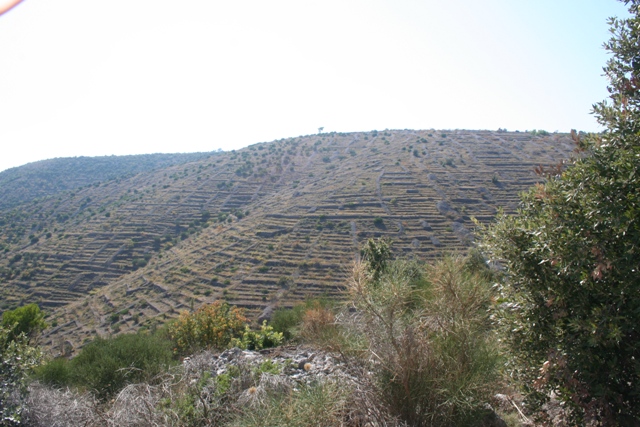
Stones have been moved and built into wide walls – wide enough for donkeys and mules, and for people to use as paths. Different varieties of grapes have been planted according to the local conditions.
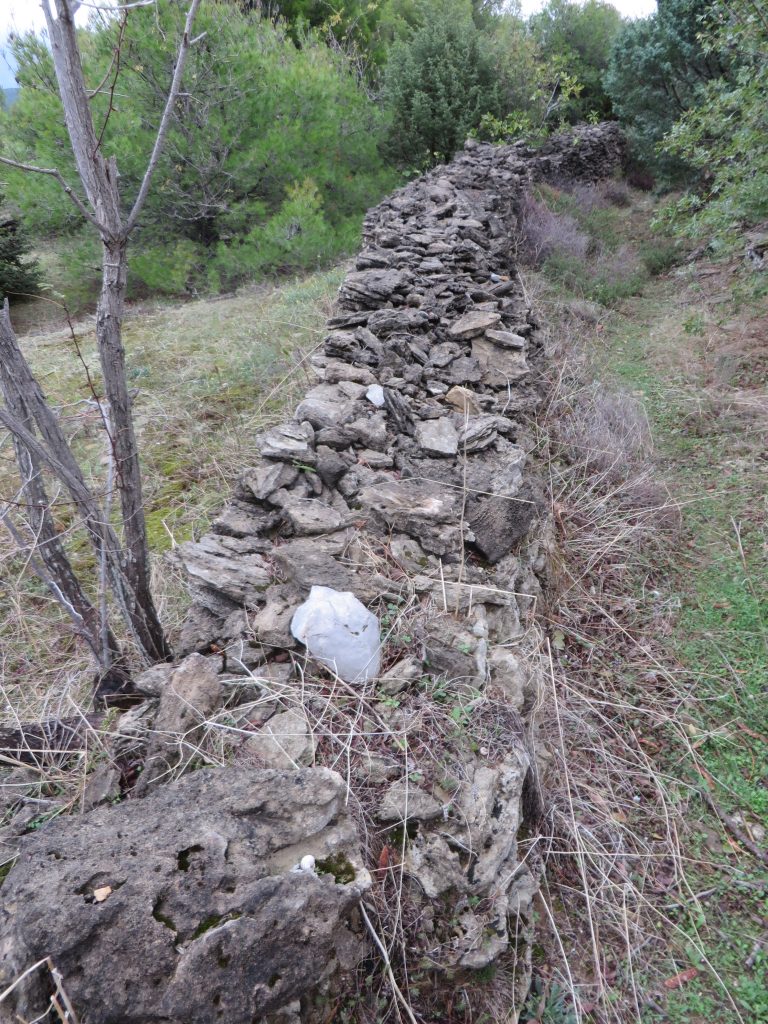
The main rock formations are Karst Limestone, with some chalk and granite, but mainly limestone, so the soil composition is alkaline.
The terraces serve the triple purpose of retaining what soil there is, retaining moisture and creating flat areas on precipitous slopes.
There are a number of large wineries, who have vast areas under vines and who also buy grapes from local growers. At the other end of the scale, there are the family run artisan wineries, who have just a few thousand vines and produce wine for them selves and their friends.
On all four sides of my home, there are these local wine makers, and this year I have been assisting my neighbour Mario and his sons with some of the work.
The different varieties mature at different times.
You perhaps already know that grapes can be either red, white or pink. But the dessert grapes you buy in the supermarket, are of a different variety to the grapes used to make wine.
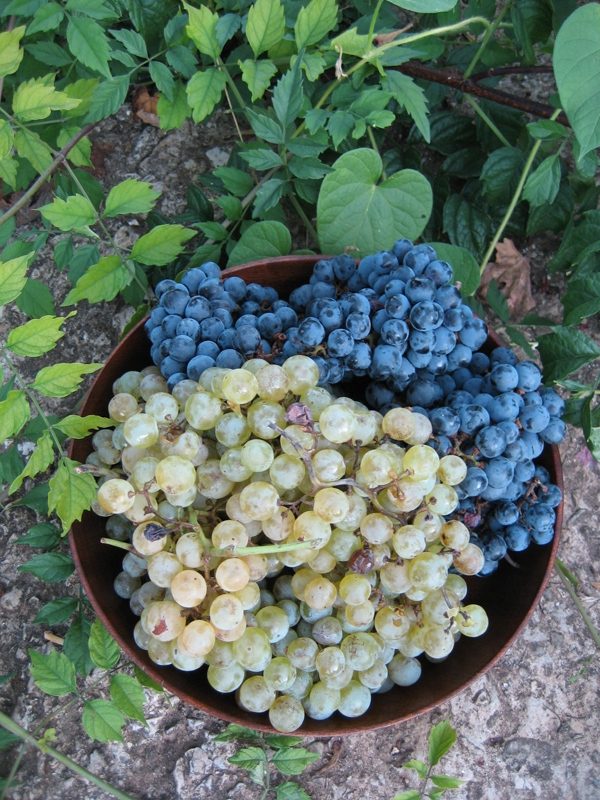
People seem to prefer seedless grapes to eat, whereas the wine grapes generally have quite large seeds, with just a few varieties being seedless.
The picking started early this year, in August, when the sun was still hot and the days long. But my neighbour only picked his last batch in the middle of October, so for two months you would have seen cars parked by the side of the road, piles of plastic crates, each capable of holding 25 kg of grapes and families, from toddlers to grandparents working their way up and down the rows of vines.
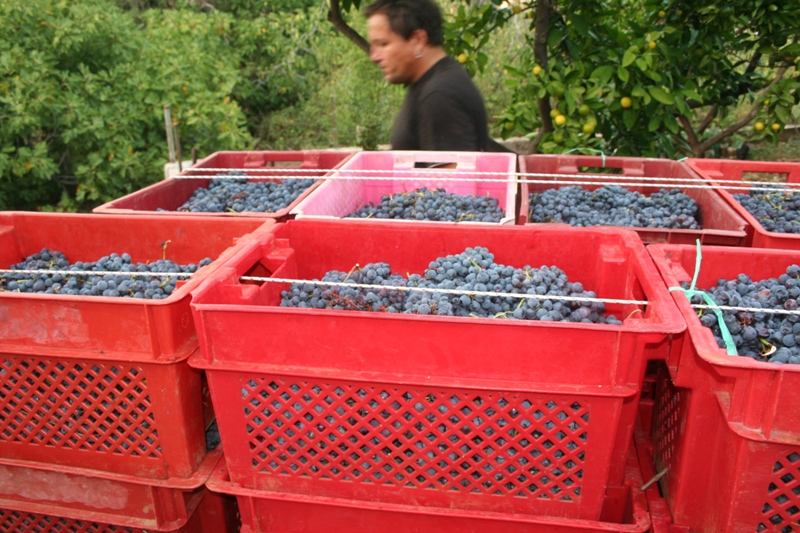
I made a decision before I moved into my home in Dol, that I would not attempt to try and make wine.
I have around a dozen vines, some very old and well established and a couple which are dessert grapes that I planted two years ago.
I know my limitations and making wine is a skill which is passed down through the families and takes years to assimilate. So the grapes I have either feed the birds and insects, are turned into fresh grape juice, or are eaten as dessert.
I still had two small bunches on my oldest vine at the end of October, so they were removed and consumed.
Wine making is a year long endeavour.
Picking the fruit is actually the start of an intensive period for the wine maker, culminating in early January when the first wine from this year’s crop will be ready for drinking.
It would be reasonable to presume that once the grapes are picked, the hard work is over. In fact there is some fairly hard work to be done throughout the year.
While the winter air is still cold and a white hoar frost can be seen in pockets around Dol, the wine makers are out pruning their established vines, cutting back the long leaders which carried this year’s fruit.
All the cuttings and leaves are removed and burnt, to prevent the buildup and spread of pests and diseases, then a rotavator will be taken to every field and will be run up and down the rows between the vines, to dig in the weeds and grass.
Maintenance will be done on the support system of wires and posts or stakes, renewing any which are broken, inspecting the wires and generally tidying up.

From early Spring into summer, the wine maker will visit his or her fields weekly and some times daily, to check and inspect the vines.
At bud burst and again later in the season, the vines will be sprayed to stop the various fungi and parasites which can cause problems.
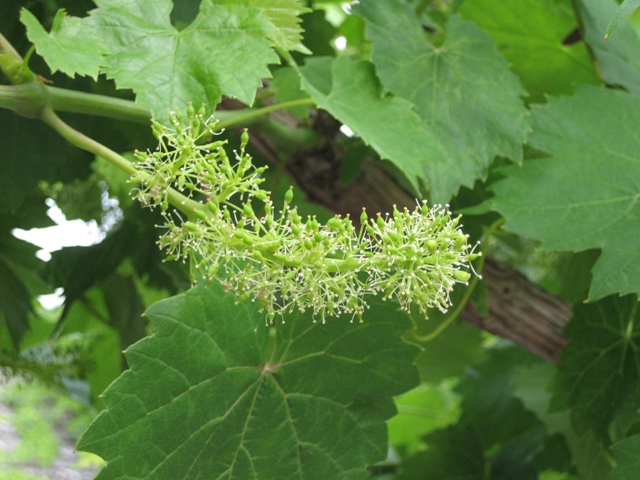

Once the buds have burst and the shoots have formed, these will be tied in to the wire framework, then there will be some light pruning.
After the fruit has formed, some bunches will be removed, then some leaves, to allow air and sunlight to reach the developing fruits.
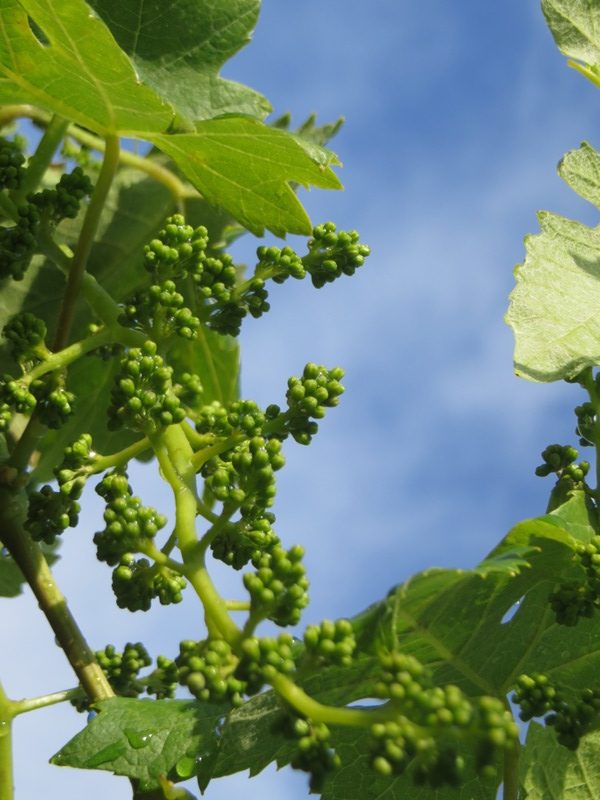
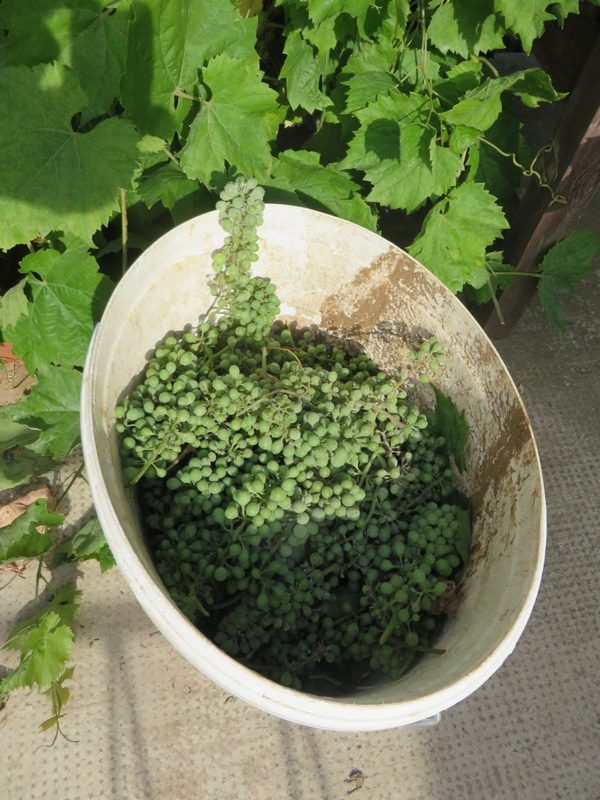
The field owner will be visiting his vines almost daily.
His (or her) skilled eye will be looking for anything unusual, so that action can be taken in good time.

Often with many thousand vines, spread over a large number of small plots – this is the way land ownership has developed in the Balkan states – it takes time and effort to do this task.
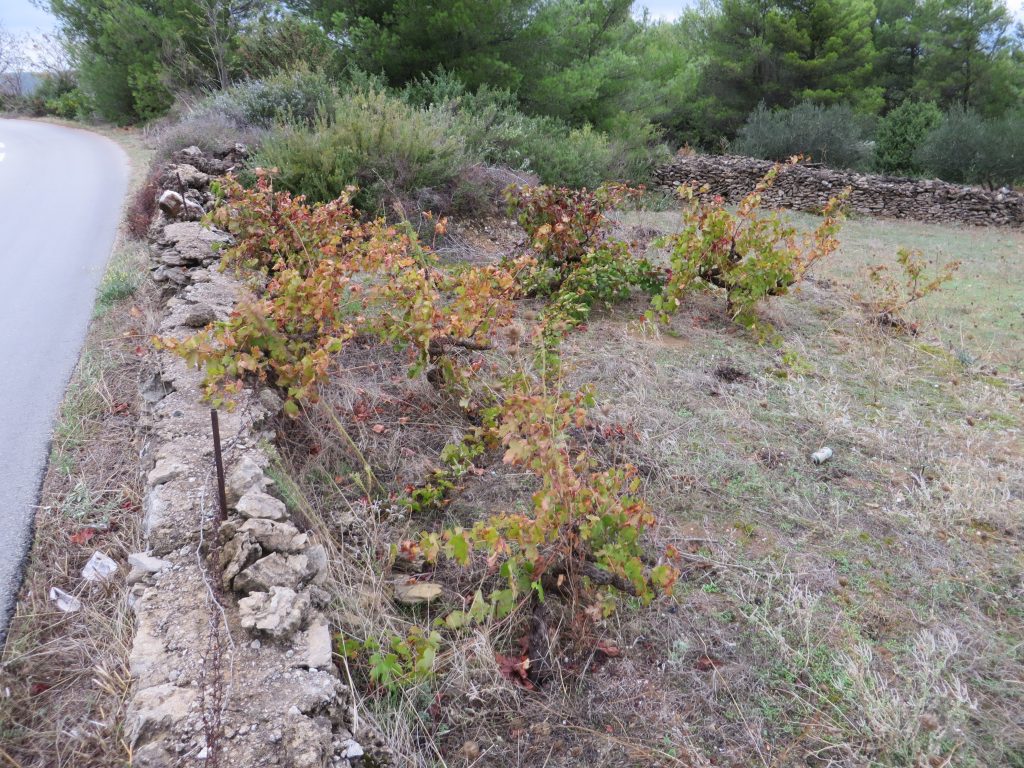
The ground will probably be rotavated at least once more, to keep the summer weeds in check.
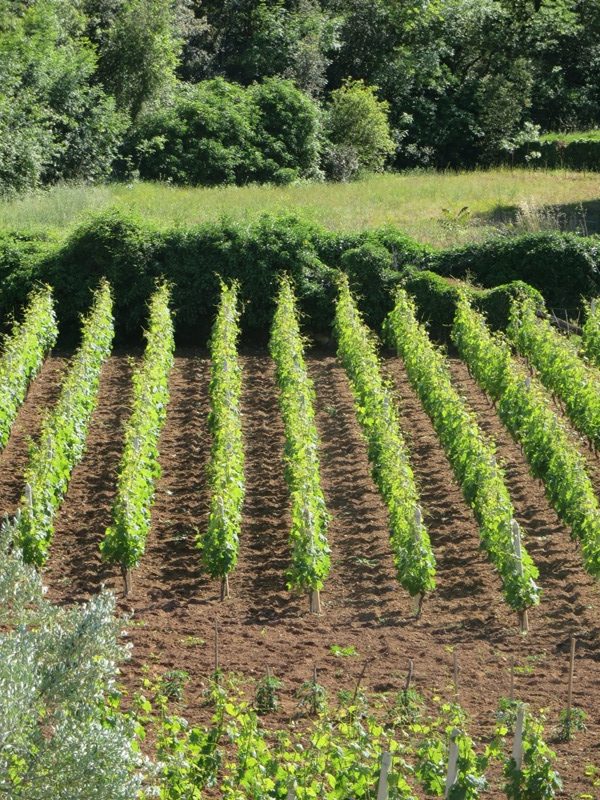
But all this care and maintenance shows.
Not everyone has the time or sometimes the inclination even, for this labour intensive activity.
Is is only the older, perhaps retired Crofter, who can lavish this amount of attention on his charges. The younger people are all fully involved in the other summer business – Tourism. This means that not every vineyard is as well cared for as the one above.

Bare soil means that the moisture in the form of rain which falls goes to benefit the vines rather than any surface weeds. But vines are very deep rooted as well, reaching down into the rock formations below to get moisture, even when there has been little or no rain for weeks.
The owner will also be constantly be looking at the weather. Too much or too little rain, or precipitation at the wrong time, and worst of all hail from a summer thunderstorm, all affect the quantity and quality of the grapes. None of these are within the control of the grower of course. All he can do is look on and hope.
The grower will know the varieties of grapes that he has and when they should be ready, but in ideal years like 2018, the harvest can and does start in August. In years with sub-optimal weather, it might not start until mid September.
Grapes will be brought back and tested for their sugar content. Over 24% is good and means that the juice will ferment naturally. Les than that and sugar may have to be added along with yeast to get the fermentation process started.
Then comes that day when the harvest will start. Family members across three generations will be involved, along with friends and neighbours.
As the group moves down the rows of vines, the bunches of plump grapes are cut and put into 15 liter buckets. These are then taken to the nearby road to be empties into 25 kilogram crates, which are loaded onto the transport to the Konoba.

Picking the grapes is just the start of the process, which will end three to four months later when the new wine is first served.
The crates are brought into Konoba – in Croatian a word used to describe the winery or a place where wine is served – where they are tipped into a mechanical macerator.

In days gone by, before mechanisation, the grapes and there are places where you can still see the area in the floor where this was done.would be treaded by foot
The crates are tipped into the top of a long stainless steel trough, where a rotating auger draws the bunches up and separated fruit from stalks and leaves, then crushes the fruit between rollers.
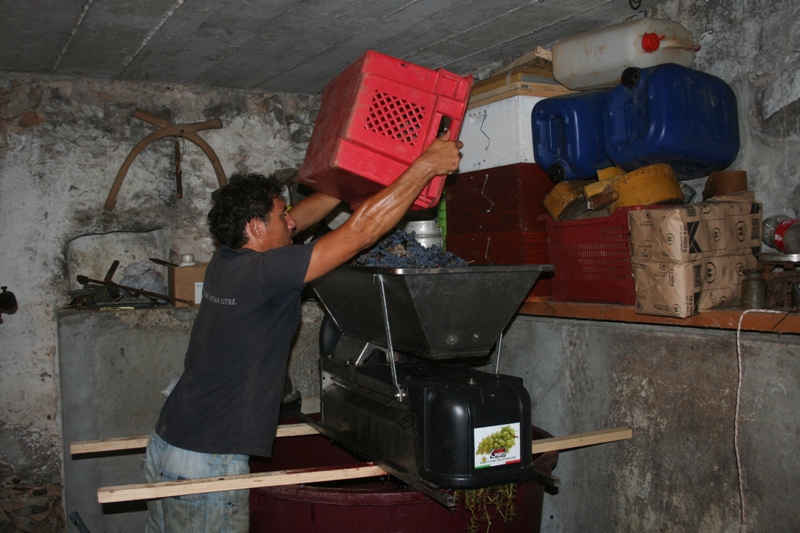
The debris is removed and collected, to be used as compost.

While the fruit pulp and juice are collected in huge vats below the macerator.

At this point the juice is a deep blood red and tastes like any grape juice that you buy in the supermarket. It is cloudy, as it still has garpe flesh and skins mixed in, but is pleasant to drink.
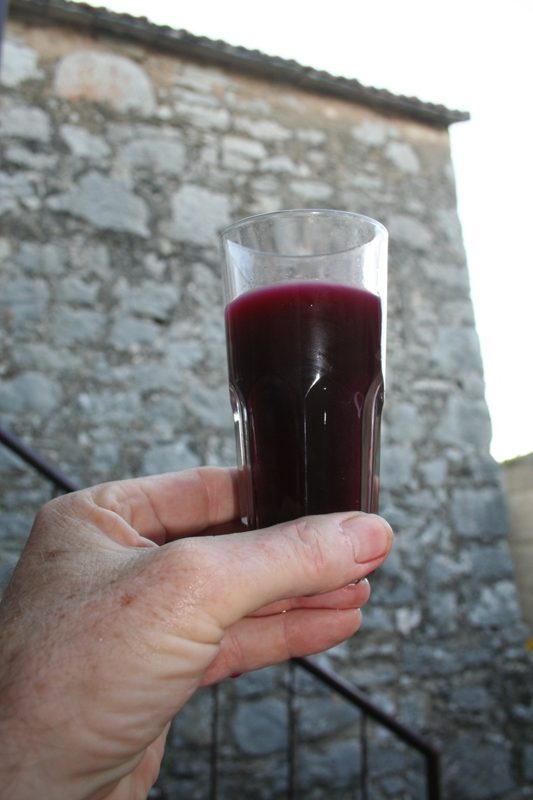
A variety of natural producs are added at this point, according to need. Some time bran, yeast, sugar if the grape sugar content is low, even sulphur.

Then the vats are covered with boards, held down under pressure and covered in cling film.
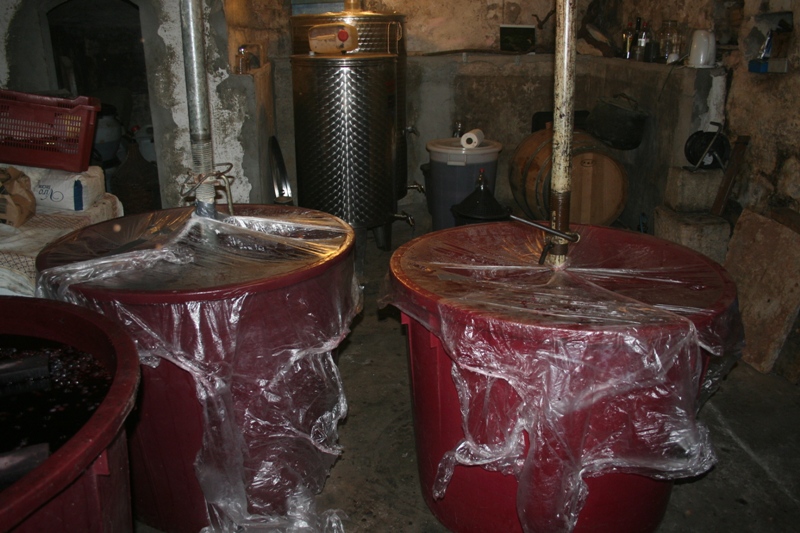
They are then left for between five and seven days. This is where the skill of the vintner comes in, knowing just when the next stage of the process should take place.
This process is aerobic, meaning there is an exchange of oxygen between the atmosphere and the vat contents.
Once the cling film is removed, you can see and hear the bubbling of the fermentation, and smell the scent of the grapes, given off in the escaping gas.

At the right moment, one of the very old machines is brought into use. The grape press.
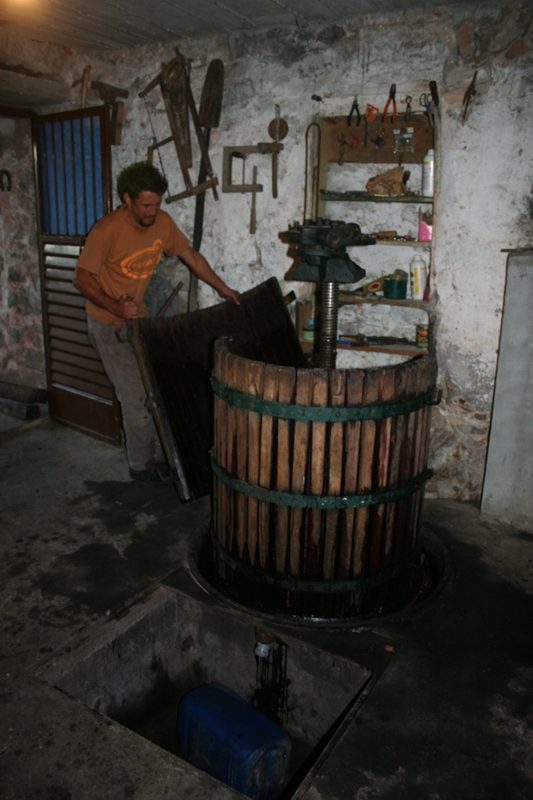
A steel worm drive fixed into the floor, with a pit where the juice is collected, surrounded by thick Ash or Oak staves, held and locked together with steel bands. In my neighbours Konoba, I couldn’t find a date of manufacture,on the ancient cast iron ratchet drive.
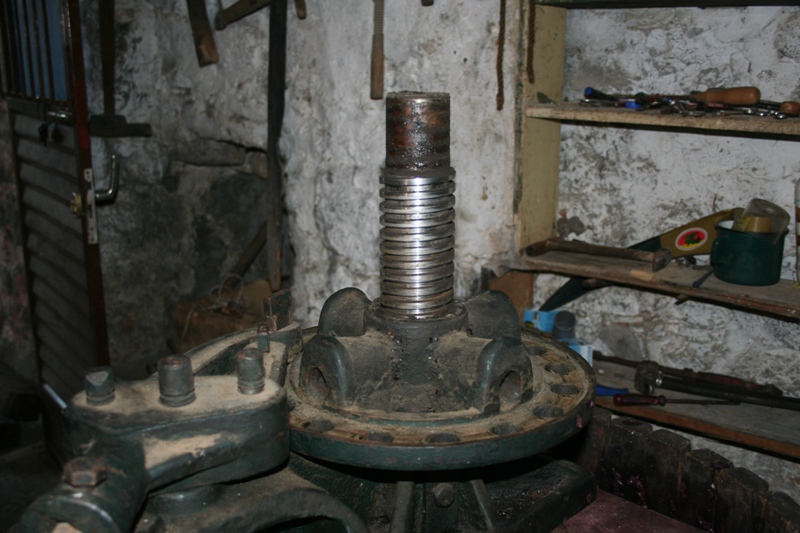
It has been used every year though, for the past 70 odd years.
The vats are emptied into the press and then stout wooden plates are placed on top, followed by baulks of Oak, as the press is operated.
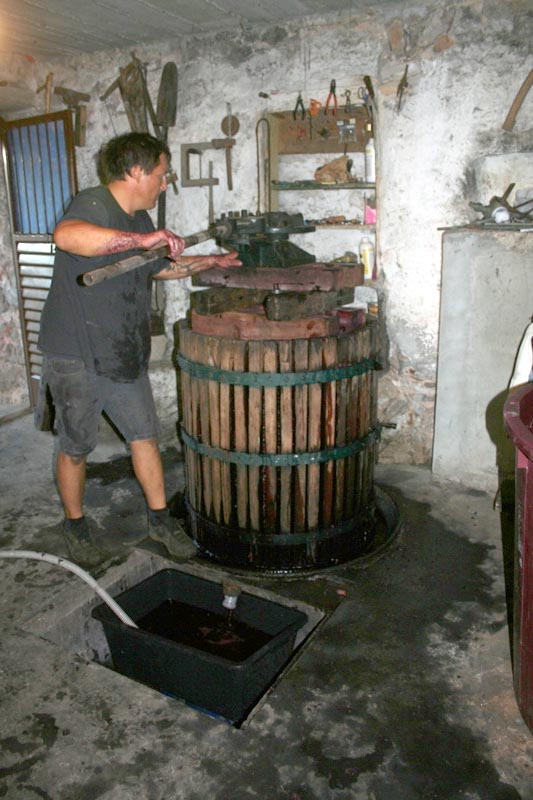
The rich red juice is collected in a funnel before running into a collecting tank at the bottom and then being pumped into stainless steel vats when the main fermentation will take place.


This second stage fermentation is anaerobic – without oxygen – and is a slower, less vigorous process.
Any sediment falls to the bottom of the tank through gravity, leaving wine above.
Meanwhile the pressing of the grapes continues until no more juice comes out, and all the first stage vats have been emptied.
Then the sides of the press are removed to access the cake of grape skins and flesh.
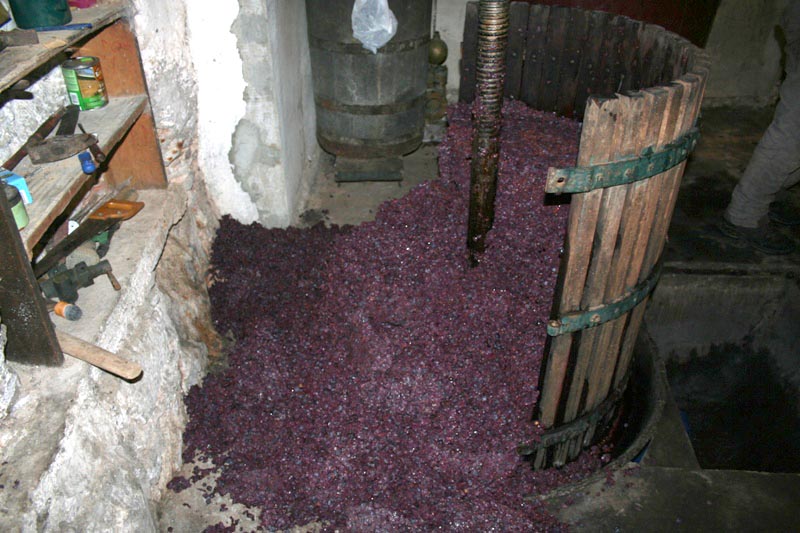
Nothing goes to waste and every last scrap of this cake is removed and put back into one of the vats.

Water is added, then the vat is covered. This will become the next batch of Rakija.
After being steeped, the liquid will be taken to a local distillery where the Rakija – a fruit brandy -will be prepared.

As Autumn turns into winter, there is more work to be done in the vineyards.
Some vines may need replacing, in which case the old wood will have to be removed and the soil prepared. The variety will be chosen and the new vines ordered.
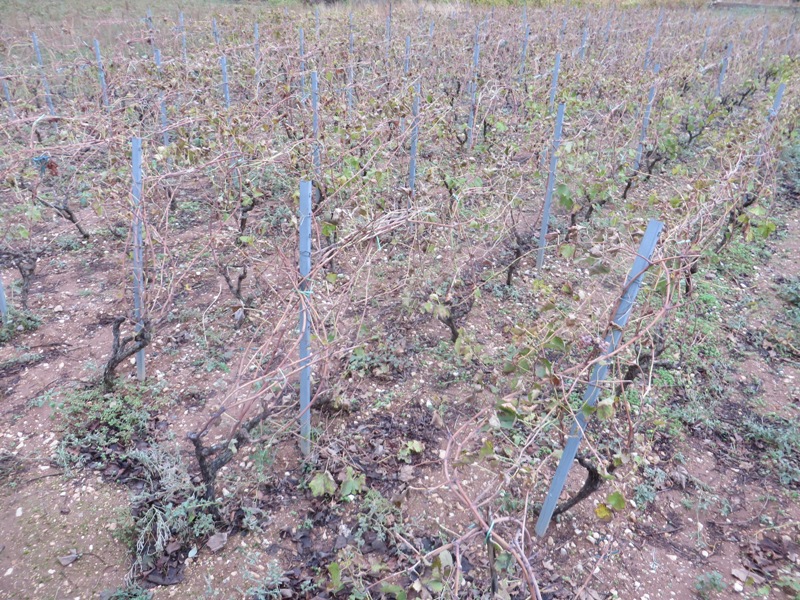
Meanwhile the equipment used for this years production will be thoroughly cleaned and put away, ready for next year’s crop.
All the time, the wine will be monitored, some times samples will be drawn off to look at the colour, smell and of course the taste.
The around Christmas or New Year, the Master Vintner will decide that the new wine is ready.
With great ceremony, the burgundy liquid will be drawn off into a bottle and friends and relatives will be offered samples and verdict will be passed on the 2018 crop.
Some of the larger artisan producers will bottle and label their wines, then offer them for sale, but for my neighbours, it is for home consumption of friends and family.
Some of the best wine may be casked in traditional Oak barrels, whilst others may be laid down in bottles, or simply left in the stainless steel tanks, to be drawn off as and when required.
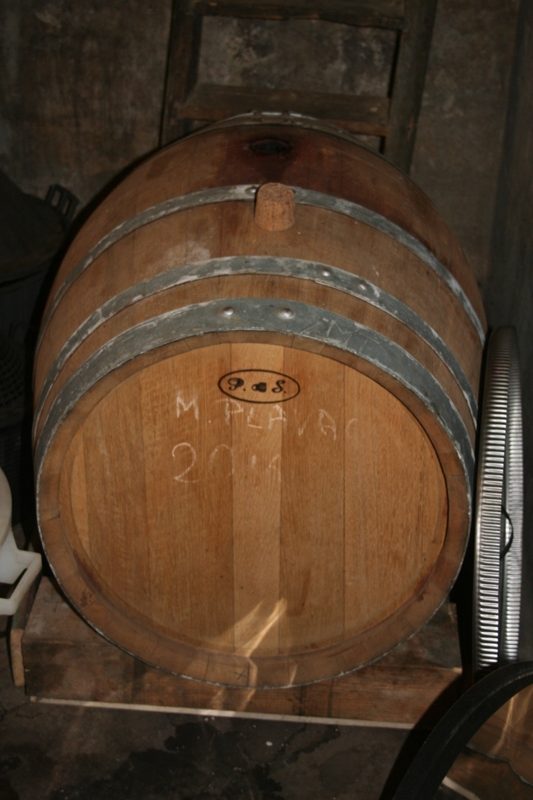
There are a bewildering number of grape varieties grown in the different geographic and soil conditions found in Croatia.
Plavac Mali is the variety of red grape grown around Dol. With a deep colour and strong semi sweet flavour, it is a pleasant wine to drink, at any time of the day.
Bottles of Croatian wine on our local supermarket shelves
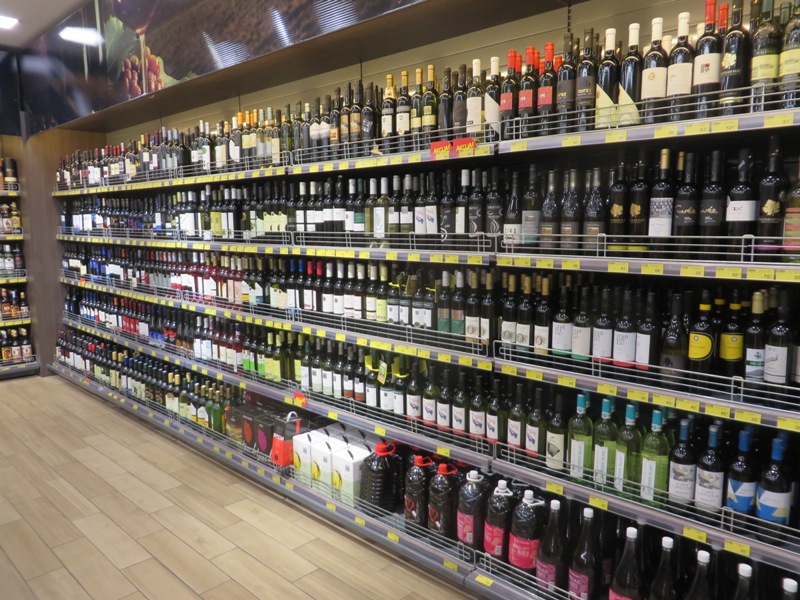
If you happen to see a bottle of Croatian wine, when next you are on an expedition to buy wine for guests, I would suggest you try a bottle. I don’t think you will regret it. NRC
Živjeli
